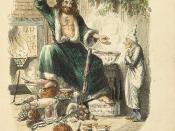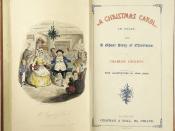Why do we like what we like? Why do our tastes change over time in the manner that they do? If you've ever wondered about these questions, you'll find Dr. Stanley Lieberson's book A Matter of Taste: How Names, Fashions, and Culture Change a fascinating work. Lieberson conducts an empirical study of children's names to examine these questions. Unlike many of our material aspects of fashion, no commercial efforts go into impacting name choice. Therefore, Lieberson observes, names provide a unique opportunity to study what drives tastes in the absence of commercial influences. His findings reveal insights about what drives our tastes that extend well beyond naming practices. Lieberson's absorbing work covers much ground. His data are drawn from Denmark, England and Wales, France, Germany, Hungary, Iceland, Scotland, and the United States. Among his numerous analyses depicted with liberal use of tables and graphs, he examines naming patterns for various racial and ethnic groups, including Asian Americans in California, Mexican Americans in Texas, White ethnic groups in Illinois, and Jewish naming patterns in the United States. He also examines African-American naming patterns from slavery forward. In additional analyses, Lieberson provides some interesting looks at issues such as the reasons behind the popularity, or lack of popularity, of certain Biblical names, the impact of the mass media on naming patterns, and the way sounds influence the popularity of names. He also examines how the symbolic contamination of names leads to previously popular names falling out of disfavor once they become associated with certain figures. Examples include the declining popularity of Donald after the appearance of Disney's Donald Duck and Ebenezer after publication of Charles Dickens' A Christmas Carol. A variety of models of the fashion process, such as the collective behavior model, class imitation and aversion, and diffusion are addressed throughout the book. Lieberson develops a theory of fashion that incorporates two major influences on tastes: external social forces and the often-overlooked impact of our "internal taste mechanisms." These internal mechanisms work to generate fashion change even in the absence of social and cultural change. Lieberson's analyses also reveal that the processes of changing tastes do not operate haphazardly. Change is both regular and orderly. These conclusions are applied to a variety of examples including men's fedoras, the length of waists on women's garments, the use of nicknames by politicians and reporters, women's titles, and music. Some of the findings in A Matter of Taste are intriguing; some are fun; almost all are thought provoking. The wealth of information Lieberson brings together expands our understanding of fashion and paints a complex picture of changing tastes and popular culture. Readers interested in these areas will find much to ponder here.
More Literature Research Papers
essays:
A Matter of Perception: Treasure Island Is Good or Bad
... of the critics today can tell you if Treasure Island is a good book or not. It is a matter of perception to see it as a good or bad book. Like the saying is, "You can't argue taste ...
The Journals of the Founding Fathers.
... of my life, when I would be sleeping, I would be woken up the shrill sounds of death... Julian enterperted Bloody Lip's fearful mumbling. He said that these things don't exist, they changed dramatically in a matter of a ...
The Joy of Cooking: Like Water for Chocolate. A comparison of the novel by Laura Esquivel to the 1992 movie. Work Cited included.
... United States. A brief synopsis of Like Water for Chocolate suggests that it is the story of Tita, third daughter of Mama Elena, and therefore consigned by tradition never to marry. The story is related through the narration of Tita?s great niece (Esperanza?s daughter), heir of ...
Impact Of Age Cohorts On Music Consumption
... of tastes within group of friends or subcultures when answering the question. However, the values of generation seem to be very subtle and work more in a subconscious level in the form of our tastes including music ones. The impact of ...
Biography of William Faulkner
... a matter of social convention as anything else. The others continue with life. We hear no more from Jewel, though from Cash's narrative it seems that Jewel took some satisfaction in Darl's institutionalization. Dewey Dell is absorbed ...





